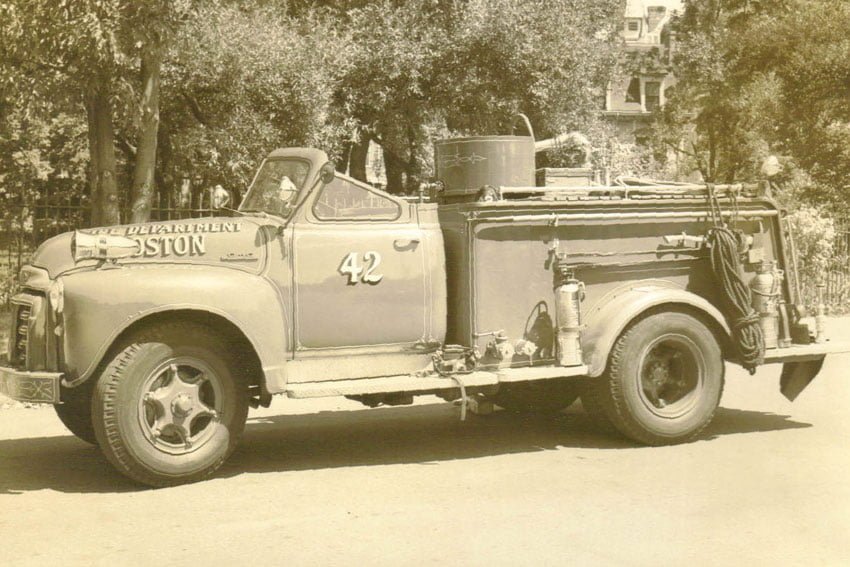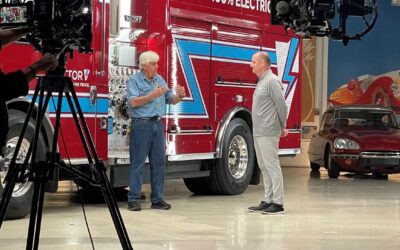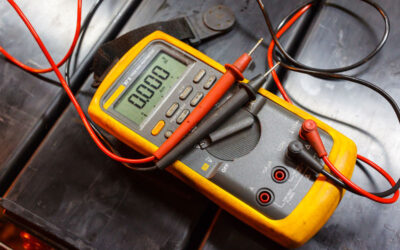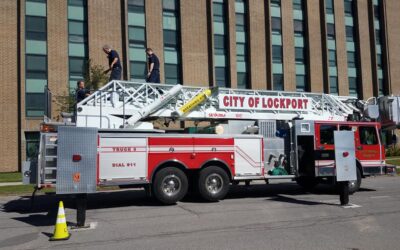
Photo, courtesy of Bill Noonan, is a 1953 hose wagon for the Boston (MA) Fire Department built on a commercial chassis by the Robinson Boiler Works of nearby Cambridge, Massachusetts. Robinson, hired to repair and modify some of Boston’s rigs, morphed, into building complete apparatus under its own name albeit for a short period of time. From the Cambridge (MA) Fire Department’s Website: “The Robinson Boiler Works, located on Second Street, made hose wagons during the late 1940s and early 1950s for the Boston and Cambridge Fire Departments as well as a few other fire trucks for other local departments. Robinson built about a dozen aircraft crash trucks for airports in New England.”
By Bill Adams
Last month’s post discussed equipment manufacturers’ trade associations and, in particular, those pertaining to fire apparatus manufacturers (OEMs). One mentioned was the Fire Apparatus Manufacturers Division (FAMD), a short-lived group that supposedly was affiliated with the Truck Body & Equipment Association. According to some old timers in the business, it was a competitor to The National Truck Equipment Association. Another story related it was a ‘coordinating group’ briefly associated with the Fire Apparatus Manufacturers Association (FAMA). Very little is written about the FAMD. It quietly disappeared sometime in the late 1980s under unknown circumstances. It is a topic some who were around in that era say they can’t remember or do not want to discuss. End of story.
Related Content
Regardless, in 1984, the FAMD published a survey with tabulated results for the various types and numbers of rigs sold in 1983. It listed 34 apparatus builders that responded to the survey and named 36 that did not. Some OEMs were not included in their survey. Familiar names today weren’t even in business back then. One example is Ferrara which started manufacturing its own apparatus in 1988. Others started after 1984 and since closed include American Eagle, American Fire Eagle, and Elite. Besides just closing, some brands simply disappeared after buyouts such American LaFrance purchasing RD Murray and Becker. Grumman had acquired Howe, Oren, and Coast before their own demise. Some OEMs in the survey that are no longer around are listed below (date in parentheses is their date of demise).
- 3D, acquired by American LaFrance in 1999 (2004)
- Allegheny Fire Equipment (1995)
- Almont (sometime after 1983)
- American LaFrance (1971, again in 1995, and finally in 2014)
- American Modular (1991)
- Boardman, acquired by American LaFrance in 1998 (2002)
- Brumbaugh (sometime in 1990s)
- Conestoga (1984)
- Continental (1984)
- FMC (aka John Bean) (1990)
- Farrar (1985)
- FTI (1988)
- Fire X (sometime after 1983)
- Forstner Fire Apparatus (2014)
- General Safety Equipment (in 1995 became part of Rosenbauer-America)
- Grumman (1992)
- Hahn Motors (1989)
- Luverne (acquired by Spartan in 1987; renamed Crimson; then Spartan ER)
- Mack (apparatus division closed in 1984)
- Maxim (acquired by Seagrave in 1956, resold in 1981, finally closed in 1989)
- National Foam System (stopped building apparatus in 2000)
- Peter Pirsch (1986; again in 1987)
- Quality (acquired by Spartan in 1987; renamed Crimson; then Spartan ER)
- Sanford (1990)
- Saulsbury (acquired by E-ONE in 1998, closed in 2004)
- Slagle (2013)
- Superior (early 2000s)
- Towers (early 2000s)
- Ward 79 (1990)
- Western States (2003)
- Young (1991)
Of the original 34 survey respondents in 1984 only six are still building under their own name: Alexis, Seagrave, Sutphen, Darley, Pierce, and SVI. That’s less than 18%. Of the 36 non-respondents to the inquiry, only four are still building under their own name: CustomFIRE, 4Guys, Marion, and EVI (renamed from EVF). That’s an 11% survival rate. Some OEMs not listed have been absorbed by recent mergers and buyouts. What happened to all the people who worked for those manufacturers? What happened to the individual dealerships that sold for them?
It can be debated whether the dwindling number of apparatus manufacturers and dealerships—the culling of the herd—is beneficial for the fire service. Are purchasers limited in their choice of product as well as in the number of vendors who knock on their firehouse doors? The larger apparatus manufacturers appear to favor what I call mega or “first-tier” dealerships—those considered to have the “biggest and best” sales and service staff.
Some OEMs forget most fire truck salesmen (my gender neutral term) started out small, often “selling out of the trunk” of their cars. Those humble beginnings are no different than most OEMs getting their start in the fire apparatus business by repairing the town’s only rig in their garage! The size an OEM is not necessarily reflective of the quality of the apparatus manufactured, nor does the size of a local dealership indicate the expertise and knowledge of its vendor that knocks on your firehouse door.
BILL ADAMS is a member of the Fire Apparatus & Emergency Equipment Editorial Advisory Board, a former fire apparatus salesman, and a past chief of the East Rochester (NY) Fire Department. He has 50 years of experience in the volunteer fire service.





